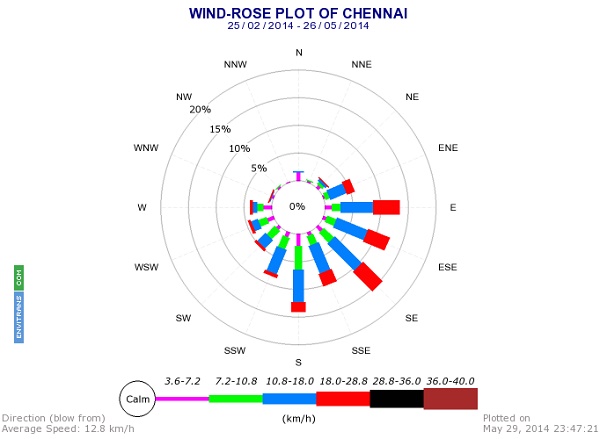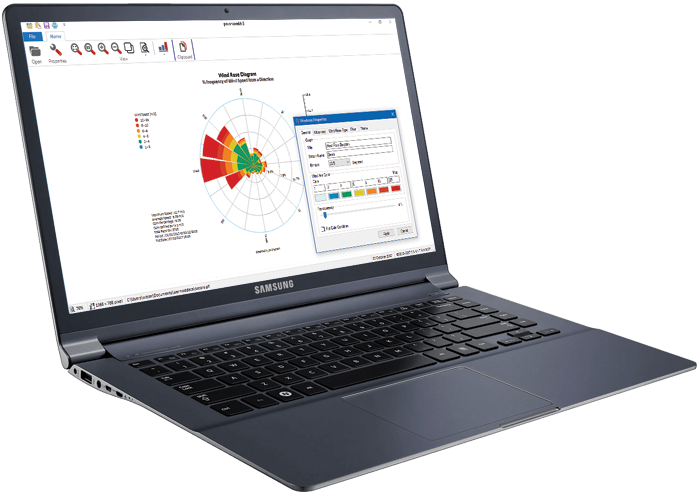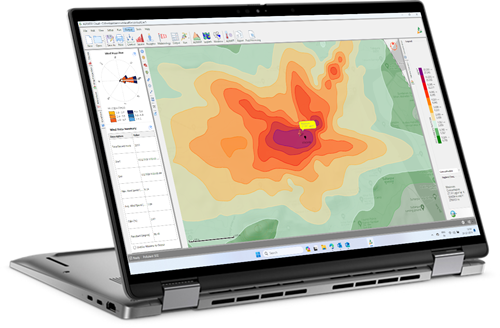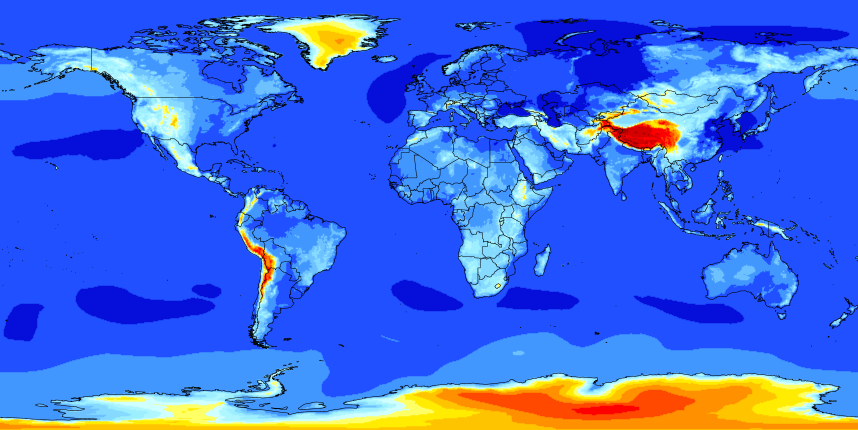A wind rose provides a concise yet information-rich representation of wind speed and direction distribution at a specific location. It is presented in a circular format, illustrating the frequency of winds originating from different directions. The length of each "spoke" around the circle corresponds to the frequency of wind blowing from a particular direction. Each concentric circle represents a different frequency, ranging from zero at the center to increasing frequencies at the outer circles.
Below is an example of a wind rose for Chennai, India, based on three months of hourly wind data across all hours of the day. These wind roses convey additional details. Each spoke is divided into discrete frequency categories, indicating the percentage of time the winds blow from a specific direction within certain speed ranges. All the wind roses presented here use 16 cardinal directions, such as north (N), NNE, NE, etc.

This wind rose reveals that the prevailing winds in Chennai during the given period predominantly blow from the southeast. In fact, the three spokes representing the southeast direction (ESE, SE, and SSE) account for 39% of all hourly wind directions. This percentage is calculated by summing the frequencies of each of these directions (13+16+10=39%). Additionally, it shows that northwest winds are infrequent. The wind roses also provide speed details from different directions. By examining the southeast direction (the longest spoke), one can determine that approximately 1% of the time the wind blows from the southeast at speeds between 3.6 and 7.2 kilometers per hour (represented by the pink color in the legend). Similarly, on this spoke, winds blow from the southeast at speeds between 7.2 and 10.8 km/hr (green color) about 3% of the time, between 10.8 and 18 km/hr (blue color) about 7% of the time, and between 18 and 28 km/hr (red color) about 5% of the time. Higher wind speeds are less frequent, with speeds between 28.8 and 36.0 km/hr (black color) occurring less often, and speeds exceeding 36.0 km/hr (brown color) being rare.
Please note the legend at the bottom of the wind rose, which provides information about the speed categories and their corresponding colors. For example, the pink color represents wind speeds between 3.6 and 7.2 km/hr, the green color represents speeds between 7.2 and 10.8 km/hr, the blue color represents speeds between 10.8 and 18.0 km/hr, the red color represents speeds between 18 and 28.8 km/hr, the black color represents speeds between 28.8 and 36.0 km/hr, and the brown color represents speeds exceeding 36.0 km/hr.
The legend at the bottom offers additional details, including the unit of measurement (km/hr), the average wind speed for all the hours (in this case, 12.8 km/hr), the percentage of time with calm winds (0%).
To calculate the typical duration of winds blowing from a specific direction and at certain speeds, multiply the respective frequency by the corresponding time duration.




